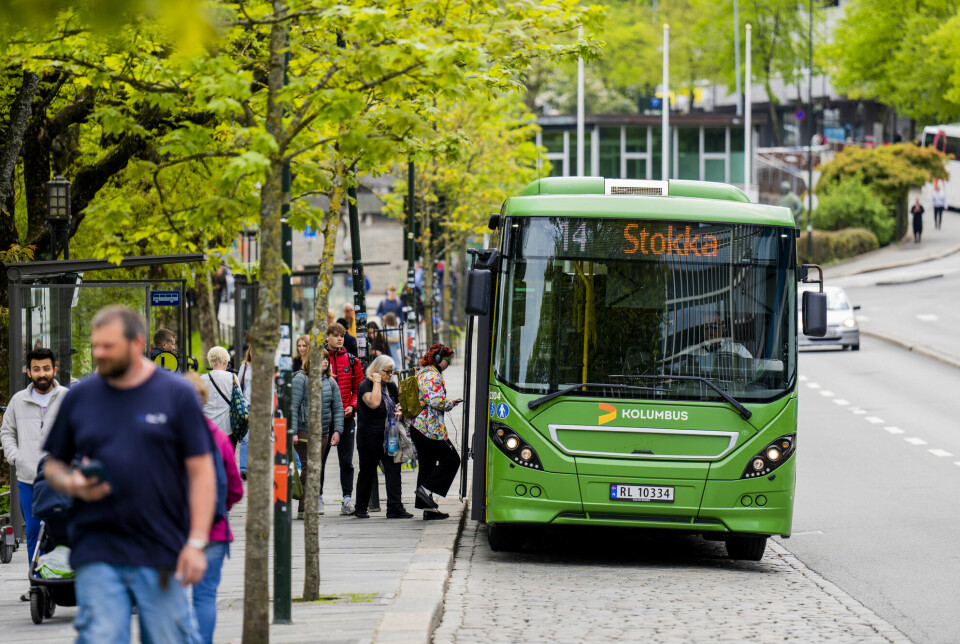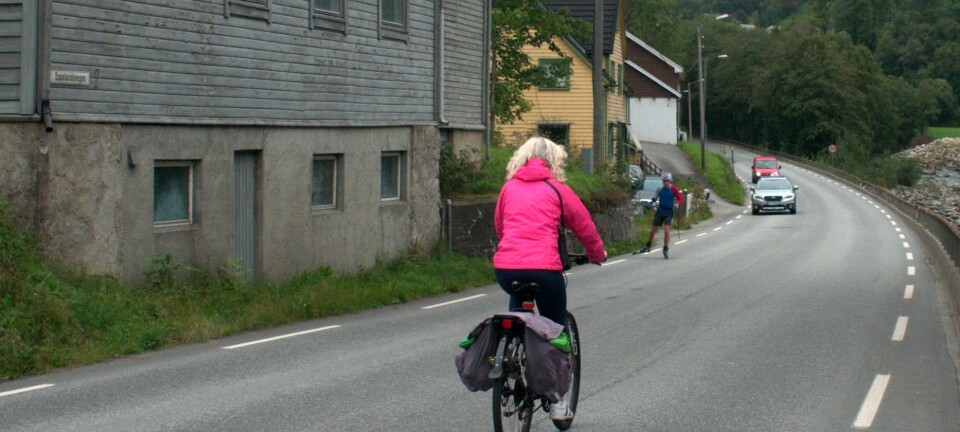
Did people drive less when they were offered free public transport?
Researchers behind a new study are uncertain.
From July 3rd until the end of 2023, the residents of Stavanger, a city in southwestern Norway, could travel by bus for free in the surrounding area.
The proposal was adopted by the Labour Party, People’s Party, Green Party, Red Party, Centre Party, and the Socialist Left Party. After the election, the parties lost the majority, and from January 2024, the scheme was scrapped.
According to a survey conducted by the Institute of Transport Economics (TØI) for the bus company Kolumbus, residents clearly used the bus more during the period it was free. However, how travel habits were otherwise affected is uncertain.
11 per cent more bus trips
Researchers at TØI compared the number of boardings in Stavanger and other places in Rogaland county before and after free public transport was introduced.
They also conducted a survey in which residents of Stavanger responded to how their travel habits had changed during the period of free buses. The survey was also sent to residents in other places in Rogaland and in Drammen, a city which does not offer free public transport, so that they could be compared.
According to the counts, the number of bus trips among the residents of Stavanger increased by 11 per cent. The surveys showed an increase of between 30 and 40 per cent, but the researchers do not have much faith in these numbers.
“The numbers from the passenger counts are more reliable because we count how many people get on and off. For the survey, there are several sources of error,” Fredrik Alexander Gregersen at TØI says. He is one of the researchers behind the new study.
Gregersen points out that far more people were sent the survey than those who chose to respond. Therefore, it may be that those who responded to the survey are not typical of the population.
For instance, let's consider that some people respond positively because they support public transportation.
Maybe fewer cars
What kind of travel the increase in bus use replaces has been assessed as uncertain by the researchers.
Based on the survey, TØI has estimated how free buses has affected the use of cars, respectively with the rest of Rogaland and Drammen as control groups.
When the researchers compared Stavanger with Drammen, they found a 17 per cent decrease in car use.
However, the researchers do not fully believe that people drove that much less.
“The issue is whether unique events in Drammen could have influenced the results. Ideally, more cities similar to Stavanger should have been included in the study. Kristiansand could have been a suitable candidate,” Gregersen says.
Based on what previous research has shown, Gregersen suspects that the actual reduction in car usage among citizens is minimal.
“What we believe is that there is a slight decrease, but it’s difficult to say. We should perhaps look at counting points for cars, and the Norwegian Public Roads Administration has counters,” he says.
No clear increase in cycling
Those who responded to the surveys were also asked about their use of bicycles, but no clear change was detected.
“This indicates that part of the increase in public transport trips comes from travellers who previously used cars,” the researchers write in the study.
However, they do not believe this can explain the entire increase in the use of public transport.
“It indicates that there is some new traffic or that the traffic replaces other forms of transport such as walking or electric bicycles. We don’t have information about walking in our survey, but based on previous studies, it’s likely that some traffic comes from walking,” the researchers further write.
Previous research does not show less car use
In the Catalogue of measures for transport and the environment (link in Norwegian), TØI reviews previous research carried out on free public transport.
There, they write that free public transport turns out to give more passengers, and that the passenger growth is mainly associated with people walking and cycling less.
When free public transport was introduced, 18.9 million USD was allocated to the pilot project, and according to Stavanger municipality's website, it cost the municipality 13.8 million USD to make bus tickets free during the trial period.
Other measures are more important
According to Gregersen, there are other measures than making public transport free that are likely more effective if the goal is for people to drive less.
“Toll fees and parking restrictions have an effect. Increasing the accessibility for public transport has also been shown to give both an increase in the use of public transport services and a decrease in car use. Price is not insignificant, but there are often other things that are more important,” says Gregersen.
He also points out that there are other reasons for making public transport free.
“Some have considered free public transport as a social measure, and here the experts disagree. Some believe it’s not very effective while also being relatively expensive. It can also be an advantage to avoid the costs of operating a ticketing system,” he says.
———
Translated by Alette Bjordal Gjellesvik
Read the Norwegian version of this article on forskning.no






































